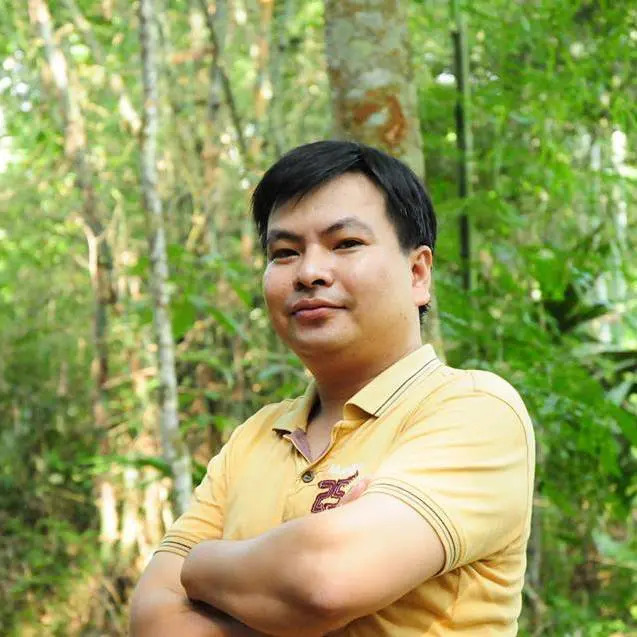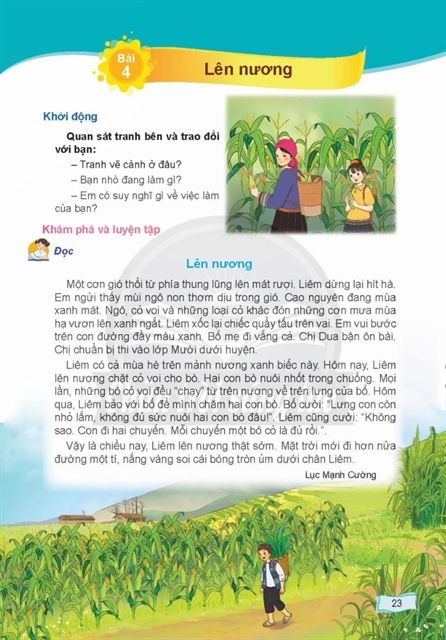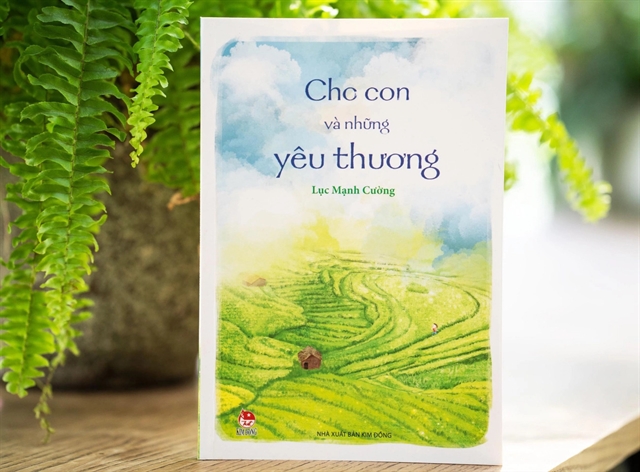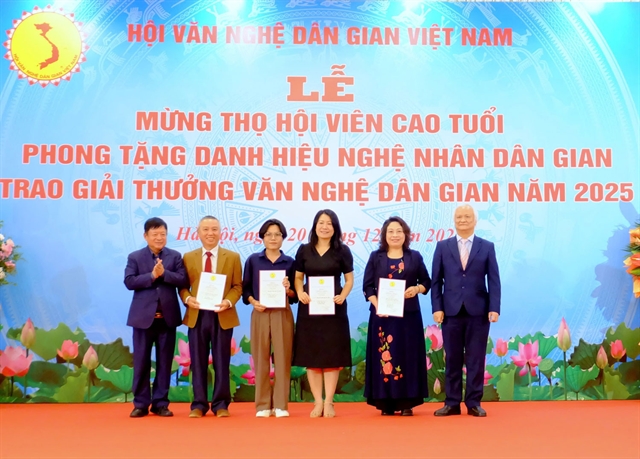 Inner Sanctum
Inner Sanctum
.jpg)
 |
| Writer Lục Mạnh Cường. — Photo thethaovanhoa.vn |
Writer Lục Mạnh Cường is a well-known name in primary school textbooks thanks to his works: Lên nương (Going to the Fields), Những mùa hoa trên cao nguyên đá (Flower Seasons on the Stone Plateau), and Lớp học cuối đông (Late Winter Class). Cường's writing revolves around life, nature, and the people of his hometown, Hà Giang Province. Every word, detail, and image of his work reflects his deep feelings for nature. Khôi Nguyên Thảo speaks with him about his literary career.
Inner Sanctum: How did you embark on your literary path?
I began writing for children approximately five years into my teaching career. During my time as a teacher, I frequently engaged in conversations with my students. The stories and lives of the students from the mountainous areas where I taught left a profound impression on me, prompting me to document them.
As a Tày ethnic born and raised in Hà Giang, with decades of teaching experience in the province, I came to realise that there are many remarkable stories around me waiting to be shared.
The first short story I wrote was titled Seo May, which won a prize in a campaign to create children's literature jointly organised by the Danish Writers Association, the Hà Nội Writers Association, and the Kim Đồng Publishing House. This achievement served as a driving force for me to continue writing for children.
Inner Sanctum: Following Seo May, you won two more prizes in children's literature. Is it true that ethnic minority children's literature is often favoured?
Perhaps due to the scarcity of mountainous-themed literature, it may appear there is a preference. However, personally, I do not believe favouritism plays a role here. If a work lacks quality or significance, any favouritism would be the quickest way for a writer to diminish their own standing. Regardless, the quality of a work cannot be concealed once it is committed to paper. Ultimately, readers are the ones who perceive and judge the work most clearly.
 |
| 'Lên nương' (Going to the fields), a work of Cường is taught in the primary school. — Photo thethaovanhoa.vn |
Inner Sanctum: Many writers before you had achieved recognition with their works on ethnic literature. Do you feel overshadowed by their influence?
When I write, I do not feel compelled to write or produce a work for any specific reason. Instead, I write when I encounter something intriguing. The reality of the lives of people and children in the mountainous areas offers many captivating aspects that I wish to share. I write simply because I want to share, without harbouring aspirations for fame or personal achievements.
I do not believe I need to overcome the shadow of any particular name. Having been born and raised in Hà Giang and having lived on this land since childhood, writing comes naturally to me. The cultural environment in which I grew up has instilled in me lasting attachments that are imprinted in my soul.
I write about the life I live. I perceive writing as a means to find happiness in the joy of sharing, and my own unique style emerges organically.
This does not imply that I solely write about my own experiences. As a teacher, I frequently hear stories from my students – stories about their daily struggles walking to school, their family lives, their friendships, and so on. Over the years, I have amassed a wealth of material from real-life situations around me.
Inner Sanctum: Your writing style is easily recognisable for its warm tone and happy endings. Has anyone influenced your style?
I write based on the stories I come across and my own perspective on life, so I don't pay much attention to style. Some writers in the Hà Giang Literature and Arts Association, whom I often meet, have mentioned that my stories exude kindness, perhaps due to the presence of happy endings. When writing for children, I always aim to convey warmth. Many people have also remarked that my writing style reflects my way of life: gentle, good-natured, and not overly vibrant.
At the Hà Giang Literature and Arts Association, I often interact with Chu Thị Minh Huệ. She is usually the first person to read my works and provides suggestions to improve them. Listening to suggestions from fellow writers helps me gain more experience in writing. I have a habit of revisiting my own works, and fortunately, I haven't noticed a significant difference in quality.
 |
| 'Cho con và những yêu thương' (For My Son and Love) is a work that Cường wrote for his son. — Photo thethaovanhoa.vn |
Inner Sanctum: You have written books for your own children and many books about students in mountainous areas. Do young readers have much to share with you?
Cho con và những yêu thương (For My Son and Love) is a short prose piece I wrote for my son when he was a young child. It's a work that I have shared extensively, especially since an excerpt from it, Lớp học cuối đông (Late Winter Class) is included in a school textbook. As for my students, many of them have read my books and discussed them.
Writing about the lives of my students, having them read and talk to me, brings me great joy. Because most students in the mountainous areas are gentle and quiet, the fact that they open up and share their thoughts with me through the books is already a success.
Inner Sanctum: You have a group of artistic friends who are also interested in ethnic children's literature. What are you doing to promote this topic?
Our group consists of eight people, including writers living in Hà Giang such as Chu Thị Minh Huệ and Nguyễn Trần Bé. We often engage in discussions about writing and reading to further immerse ourselves in this field. There used to be a bookshelf dedicated to ethnic minority children's literature by the Kim Đồng Publishing House, which generated a lot of interest among the students. However, it no longer exists.
In reality, there are writers who excel in depicting the lives of children in mountainous areas, but there are also authors who are not well-versed in this subject and whose works are not suitable for ethnic children. Therefore, while there is attention being given, students still lack books that depict their lives and the society they live in.
We hope that, through our small contributions, we can do something to help young people write and read better. However, ensuring that highland children do not "lack books" and maintain a hunger for reading is a significant challenge that requires the collective effort of many individuals. — VNS
.jpg)



